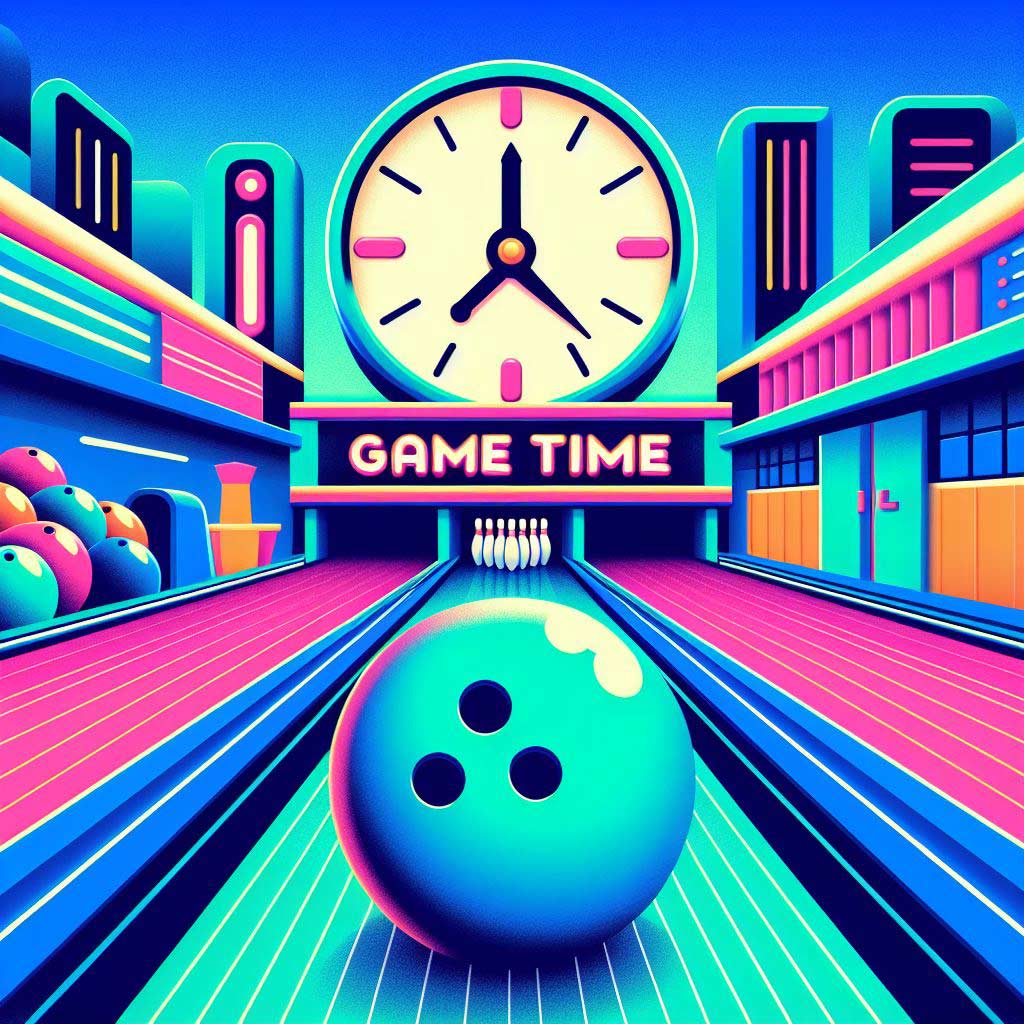Bowling is one of America’s most beloved recreational activities, enjoyed by people of all ages. Whether it’s a casual outing with friends, a family activity, or a night out at the local bowling alley, the sport offers an opportunity for fun, competition, and social connection.
However, one of the common questions people have about bowling is, “How long does a typical bowling game last?” The answer can vary quite a bit depending on several key factors.
In this comprehensive guide, we’ll dive into the details of average bowling game duration, the elements that influence playtime, and tips to keep your bowling sessions moving efficiently.
What Factors Impact Bowling Game Length?
Before we get into the specifics of average game duration, it’s important to understand the various factors that can affect how long a bowling game lasts. Here are some of the key elements that come into play:
Number of Players Per Team
One of the biggest determinants of bowling game length is the size of the playing groups. A standard game of bowling is played with 1-6 players per team, and the more people you have, the longer the game will typically take.
With just 2-4 players, the game can move along at a brisk pace, with each person taking their turns quickly. But once you get into larger groups of 6 or more players, the time between frames starts to add up, resulting in a longer overall duration.
Skill Level of the Players
The skill level and experience of the bowlers also plays a role in game length. Beginners and casual players generally take more time between frames, as they carefully line up their shots and think through their approach.
More experienced bowlers, on the other hand, are able to transition between shots more quickly, keeping the game flowing at a steadier pace. League bowlers and competitive players also tend to have a quicker tempo.
Whether it’s a League or Casual Game
The context of the bowling game also makes a difference. If it’s a league or tournament setting, the games will usually last longer than a casual outing with friends or family.
League play often involves multiple games bowled in a session, and there may be additional time set aside for scoring, awards, and socializing. Casual games, in contrast, are typically just a single standard 10-frame game.
Single Game vs. Multiple Games
Speaking of multiple games, that’s another factor that can extend the overall duration. Many bowling alleys offer the option to play back-to-back games, either as part of a league or simply as an extended recreational activity.
When players commit to 2, 3, or even more games in a single visit, the total time commitment increases substantially. A single 10-frame game may only take 30-60 minutes, but multiple games can easily stretch the outing to 1.5-3 hours or more.
Pace of Play Between Frames
Even within a single game, the pace at which players move between frames can impact the overall length. Some bowlers are more methodical, taking their time to line up shots and think through their strategy. Others are quicker to step up and roll the ball.
The tempo that a group maintains between frames – whether it’s a relatively brisk pace or a more leisurely one – will directly influence how long the game takes to complete.
Average Duration of a Bowling Game
Now that we’ve covered the key factors that influence bowling game length, let’s dive into the specifics of average playtime:
Single Game with 2-4 Players: 30-60 Minutes
For a standard 10-frame bowling game with just 2-4 players, the typical duration is around 30-60 minutes. This range accounts for both experienced bowlers who can move through the game quickly, as well as newer players who may take a bit more time.
In this smaller group setting, the pace of play tends to be relatively brisk, with players readily available to take their turns. There’s usually minimal downtime between frames, allowing the game to flow at a steady clip.
Single Game with 6+ Players: 45-90 Minutes
When the group size expands to 6 or more players, the game duration tends to increase to around 45-90 minutes for a single 10-frame session. The larger number of people means more time between each player’s turn, which adds up over the course of the game.
Beginners and casual bowlers in larger groups also contribute to a longer overall playtime, as they often take more time to set up and execute their shots. The pace of play in these situations tends to be more leisurely, with occasional lulls and breaks.
Multiple Game Sessions: 1.5-3 Hours
Many bowling alleys offer the opportunity to play back-to-back games, either as part of a league format or simply as an extended recreational activity. When players commit to 2, 3, or even more games in a single visit, the total time commitment increases substantially.
A typical multi-game bowling outing can last anywhere from 1.5 to 3 hours or more. This wider range accounts for factors like group size, skill level, and the pace maintained between games.
Larger groups of beginners or casual players may be on the higher end of that timeframe, while experienced bowlers in smaller teams may be closer to the 1.5-hour mark.
It’s worth noting that the duration can vary even further depending on additional elements like breaks for food, drinks, or socializing. League or tournament play may also involve extra time for scoring, awards, and other league-specific activities.
Factors That Can Extend Bowling Game Length
While the averages above provide a general guideline, there are several factors that can lengthen the duration of a bowling game or session:
Beginners or Casual Players
As mentioned earlier, less experienced bowlers tend to take more time between frames as they carefully line up their shots and think through their approach. Beginners may also require more time to set up, recover from missed shots, and learn the mechanics of the game.
Large Groups with 6+ Players
Larger groups, especially those with 6 or more players per team, simply take longer to get through a game. The increased downtime between each player’s turn adds up, resulting in a longer overall duration.
Stops for Food, Drinks, or Breaks Many bowling outings include additional activities like eating, drinking, or taking breaks. Whether it’s a quick snack, a round of drinks, or a longer pause for a meal, these interruptions can significantly extend the total time spent at the bowling alley.
League or Tournament
Play Bowling leagues and tournaments often involve multiple games played in a single session, plus additional time set aside for scoring, awards, and other league-specific activities. This structured format naturally results in longer overall durations compared to casual recreational play.
Tips to Keep Bowling Games Moving Efficiently
While the length of a bowling game can vary quite a bit, there are some best practices that can help keep the pace moving and maximize the fun:
- Encourage Players to Be Ready When It’s Their Turn – One of the easiest ways to streamline bowling game length is to ensure players are ready to take their turn as soon as it’s their time to roll. Encourage everyone to step up to the lane as soon as the previous player has finished, minimizing delays between frames.
- Limit Time Between Frames – Similarly, try to discourage players from taking excessive time between frames. Casual conversation, adjusting equipment, or taking too long to line up a shot can all contribute to a slower pace of play. Gently remind the group to keep the game moving.
- Avoid Long Breaks or Socializing During Gameplay – While breaks for food, drinks, or socializing can be part of the bowling experience, try to keep these interruptions relatively short. Lengthy pauses in the middle of a game can disrupt the rhythm and momentum, leading to a longer overall duration.
- Consider a Shorter Format Like “Speed Bowling” – If you’re looking to keep things moving at a brisk pace, you could also explore alternative bowling formats like “speed bowling.” This condensed version involves shorter frames and a quicker cadence, allowing you to complete a game in as little as 20-30 minutes.
By implementing these tips, you can help ensure your bowling outings are efficient, engaging, and maximized for fun, no matter how many players are in your group.
Conclusion
Bowling is a beloved pastime that provides entertainment, competition, and social connection for people of all ages. But one of the common questions around the sport is, “How long does a typical bowling game last?”
As we’ve explored in this comprehensive guide, the duration of a bowling game can vary quite a bit depending on several key factors:
- The number of players per team
- The skill level and experience of the bowlers
- Whether it’s a casual outing or a league/tournament setting
- If it’s a single game or multiple games
- The overall pace of play between frames
On average, a standard 10-frame bowling game with 2-4 players can last 30-60 minutes, while larger groups of 6 or more players may extend the duration to 45-90 minutes. Multi-game sessions can stretch the total time commitment to 1.5-3 hours or more.
Factors like beginner players, large groups, breaks, and league play can all contribute to longer bowling game lengths. But by implementing best practices like keeping players ready, limiting time between frames, and considering faster formats, you can help ensure an efficient and enjoyable bowling experience, no matter how long it takes.
So the next time you head to the lanes, keep these insights in mind and focus on making the most of your bowling adventure – whether it’s a quick single game or an extended multi-frame session. The most important thing is to have fun and make lasting memories with friends, family, or league teammates.





